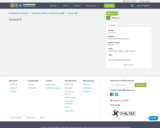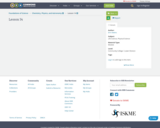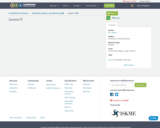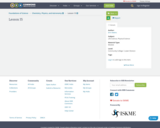
- Subject:
- Life Science
- Physical Science
- Material Type:
- Module
- Author:
- Erin Owens
- Date Added:
- 05/11/2021

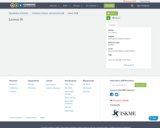
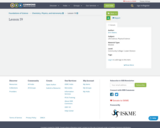
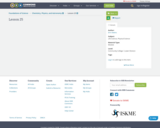
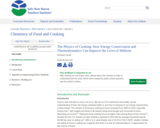
This curriculum unit, exploring the energy in food and the thermodynamics of cooking, will include 5 days of 80-minute lessons in which the students will pick a particular food to study. The food will either need to be purchased or produced, and will need to be a food that begins as batter or liquid and solidifies during cooking. For those students who, for any reason, cannot bring in the food, they will be provided a brownie, cupcake, or other common food item. The project will contain two main components or parts. First, the energy stored within the food will be analyzed by applying mathematics. This will require conversion between a common physics unit of kilojoules (kJ) and a common household unit of kilocalories (kcal, CAL or Calories). Students will then need to apply their knowledge of work and energy conservation to provide an example of physical exercise that would be required for them to expend an equal amount of energy that is contained in their food. If a student is uncomfortable sharing their own mass, they may use the common example of a 70-kg person. The second part of their project will involve them using experimental data to determine the heat diffusion constant for their particular food by using a method similar to that described by Rowat et al. published in 2014, “The kitchen as a physics classroom10.” This can be done by placing several thermocouples in their food sample (or probing with toothpicks as will be described later) while heating until the center of the food gets to a desired temperature. Once the diffusion constant is determined, it can then be used to derive an equation that will allow the students to determine the required cooking time based on the size of the food sample. Although larger meals may be interesting samples for the experiment, the food samples must remain reasonably small so that the experiment can be completed within a single class period and can be cooked using toaster ovens or small classroom heaters. Students, in groups of 2-3, will be required to share their data with the class so that the results can be discussed. Students will be graded on their mathematical analysis and an accurate derivation of an equation to predict cooking time based on their measured diffusion constant. Teacher checks will be structured strategically throughout the process to ensure student projects meet the requirements and that student groups remain on pace. By relating energy in food to exercises with equal outputs, and by generating equations to ensure foods will be cooked properly, students not only learn physics in an engaging way but also learn how physics can be used to tackle real-world problems.
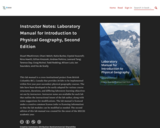
Short Description:
This lab manual is a cross-institutional project from British Columbia (BC), Canada that provides 24 labs to be implemented within first year post-secondary physical geography courses. The labs have been developed to be easily adapted for various course structures, durations, and differing laboratory learning objectives set out by instructors. Instructor notes are available for each lab that outline the instructional intent of the lab author, along with some suggestions for modifications. The lab manual is licenced under a creative common license (refer to licensing information) so that the lab modules can be modified as needed. The second edition of this lab manual was created for the onset of the 2021/22 academic year.
Long Description:
Physical geography lab exercises tend to be crafted for internal institutional use only. In light of the need to have online laboratory material for remote instruction, a group of geography instructors from across British Columbia (BC), Canada came together for this collaborative project with the goal of producing a cross-institutional open education resource (OER) laboratory manual for first-year post-secondary physical geography courses. The lab manual consists of 24 labs that cover an introduction to physical geography, weather and climate, biogeography, map and geospatial skills, hydrology, geomorphology, and landform identification. Many of the labs have a BC setting; however, they are useable across Canada and further abroad. The majority of the labs have been developed so that they can be done in any order to increase instructor flexibility and promote adaptability to differing course structures and durations. Many of the labs have students using live data, or built-in flexibility with datasets for instructors in order to prevent the lab exercises becoming static over time. The lab manual is licenced under a creative common license (refer to licensing information) so that the lab modules can be modified as needed by instructors to meet the learning outcomes of their students.
The second edition of this lab manual was created in the spring and summer of 2021 for the 2021/22 academic year and beyond. The second edition features substantial revisions to the labs and instructor notes for consistency and effectiveness, a reordering of the lab numbers, and two new labs (lab 07 and 19).
Word Count: 39337
(Note: This resource's metadata has been created automatically by reformatting and/or combining the information that the author initially provided as part of a bulk import process.)

The purpose of this class is to offer students a new perspective on the importance of our bodily experience to our cognitive and social lives. The curriculum is designed to foster a working appreciation for how better bodily awareness can positively affect how we feel in our bodies, carry and present ourselves for improved social sensitivity and more successful social interactions.

Word Count: 51481
(Note: This resource's metadata has been created automatically by reformatting and/or combining the information that the author initially provided as part of a bulk import process.)

This OER Lesson was created by Chloē Reinwald, Liz Martínez, Kelleen Rosebaugh and as part of the 2024 World Language OER Summer work and training. Educators worked with Chrystal Liu, Nick Ziegler and Dorann Avey to create OER Learning Plans and materials. The attached Level 2 Unit 2: Sports & Physical Activity Curriculum Map is designed for 9 - 12 World Language Arts teachers to adapt into their target language for Novice Learners of Spanish. The purpose of this unit is to learn about sports and physical activities; how they impact physical, social, mental health; value they hold across different cultures; and how they connect people within the community. The following NDE World Language Standard(s): It is expected that this Unit will take students 14-16 days to complete.
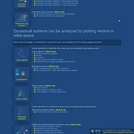
The stochastic simulation algorithm (SSA, Kinetic Monte Carlo, Gillespie algorithm) produces an example trajectory for a particular member of a probabilistic ensemble by looping over the following steps. The current state of the system is used to determine the likelihood of each possible chemical reaction in relative comparison to the likelihoods for the other possible reactions, as well as to determine when the next reaction is expected. Pseudo-random numbers are drawn to "roll the dice" to determine exactly when the next reaction will proceed, and which kind of reaction it will happen to be.
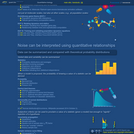
In the first part of this video, we derive the law of mass action from one example of a picture of molecular collisions. For this course, we use the "law of mass action" to refer to an idea that chemical reaction kinetic rates can be expressed using products of the abundances of reactants raised to exponents. Studying cooperativity and Hill functions in the second part of the video allows us to investigate a simple example of bistability in the third video segment.
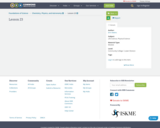
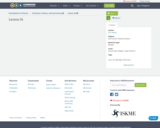

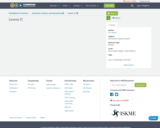
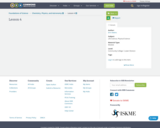

This resource is a video abstract of a research paper created by Research Square on behalf of its authors. It provides a synopsis that's easy to understand, and can be used to introduce the topics it covers to students, researchers, and the general public. The video's transcript is also provided in full, with a portion provided below for preview:
"These metallic pillars are helping researchers understand the physical properties of biological cells like never before. Individually controlled electronically, they’re able to stop cells in their tracks and make them spin using dielectrophoretic forces. This microscopic line dance provides bioelectric information that could help researchers analyze unmarked single cells on a chip—all without handling them directly. The so-called electrorotation system works like this. Cells suspended in a fluid flow through the device at a given rate. With no electric field applied, the cells simply slip past the entrance and exit electrodes. But applying a high-voltage signal to the exit posts creates an impenetrable force field. Applying the same signal at the entrance completes the trap: no cells in and no cells out. One at a time, the system captures up to 39 cells. Once all the traps are filled, a rotational signal is mixed in with the trapping signal..."
The rest of the transcript, along with a link to the research itself, is available on the resource itself.
